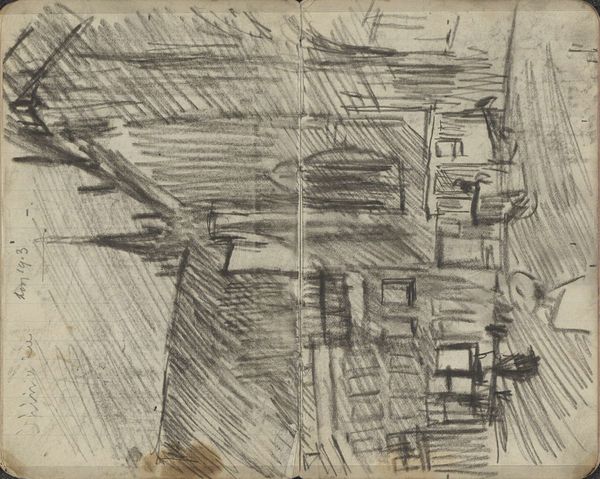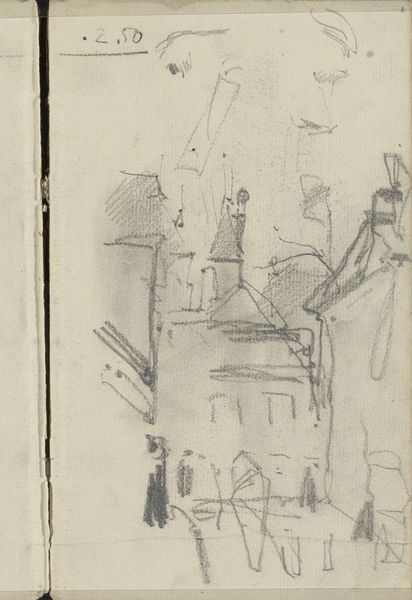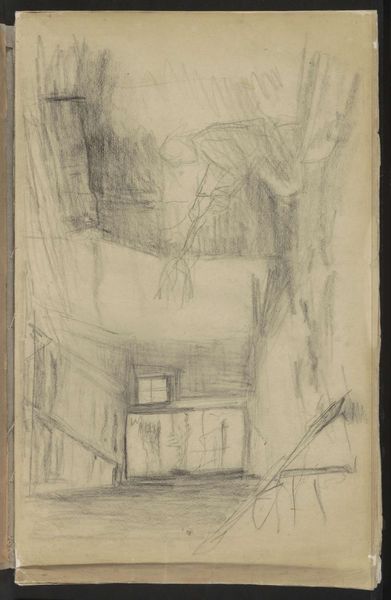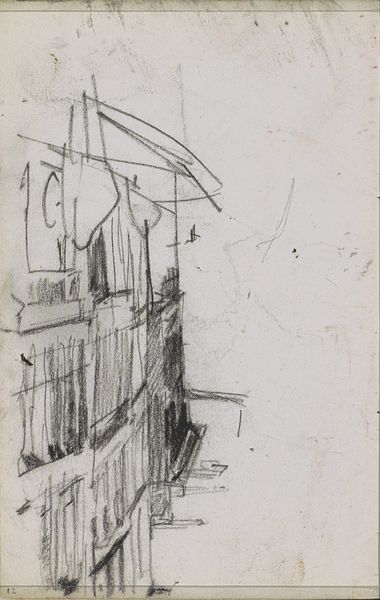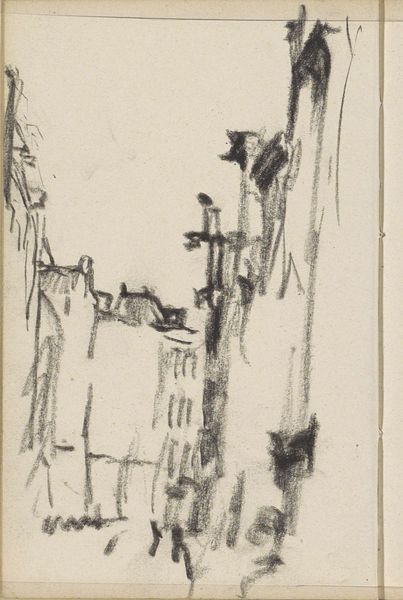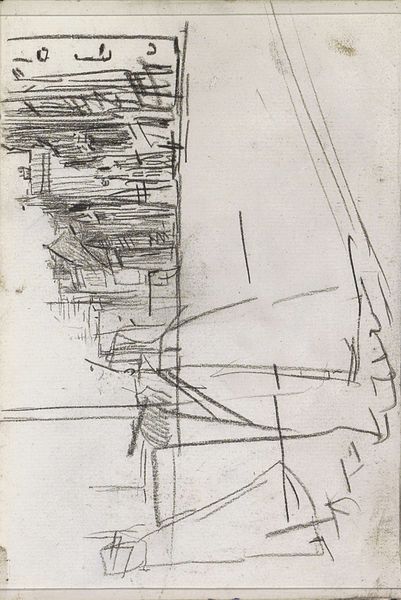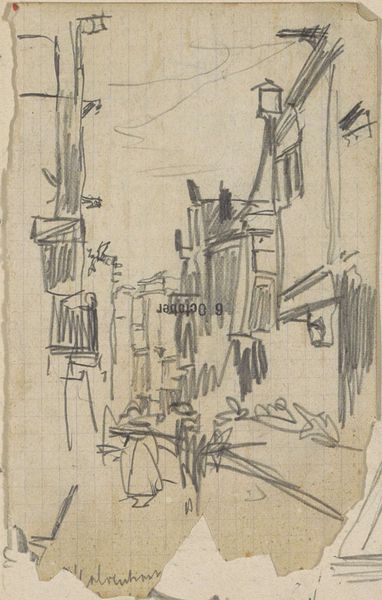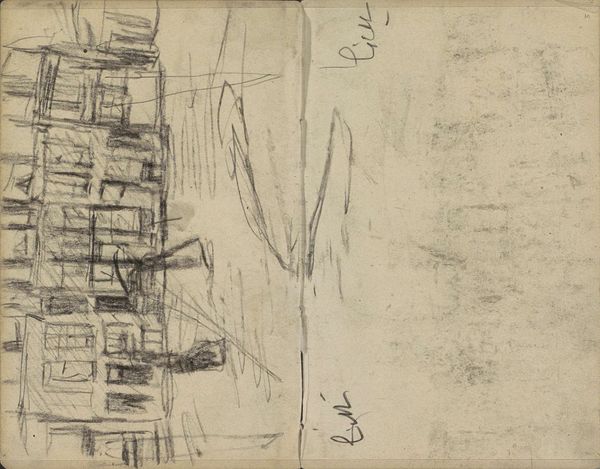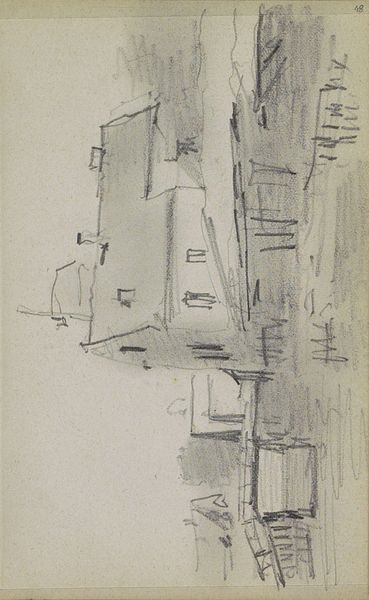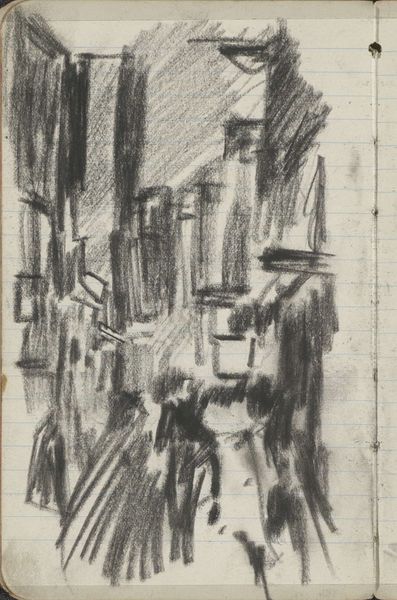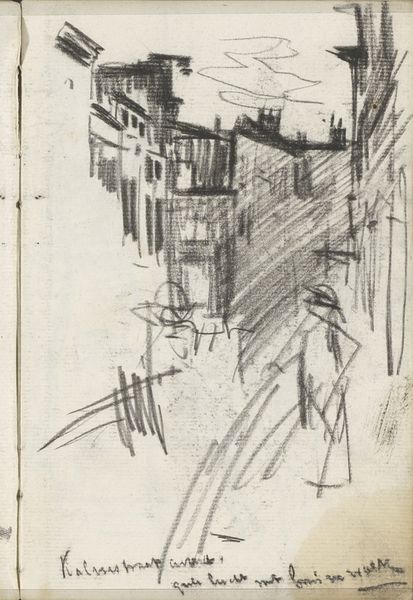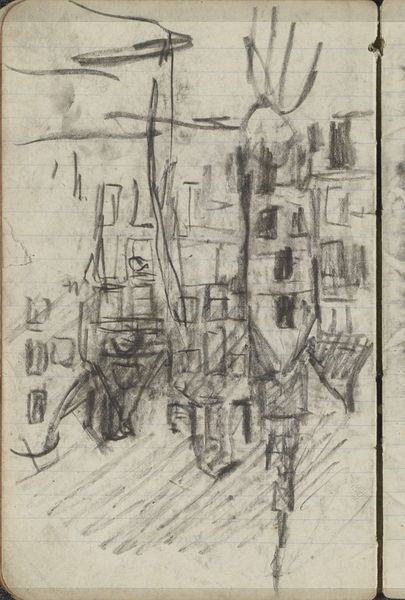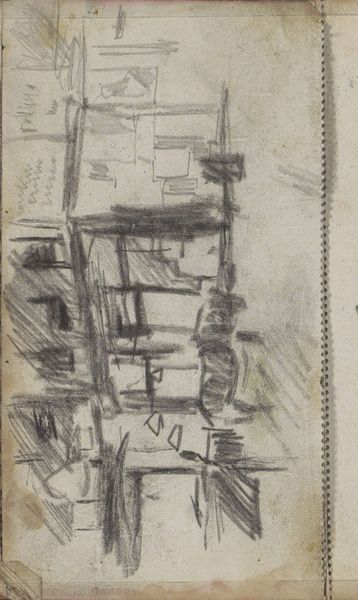
drawing, paper, graphite
#
drawing
#
impressionism
#
paper
#
graphite
#
cityscape
#
street
Copyright: Rijks Museum: Open Domain
Curator: This drawing, simply titled "Gezicht op een straat in Amsterdam," or "View of a street in Amsterdam" was created by George Hendrik Breitner, likely between 1887 and 1891. It is made using graphite on paper. Editor: It has a wonderfully gritty, almost rushed quality, doesn’t it? I can almost smell the damp pavement. Curator: Absolutely. Considering Breitner's own politics as a socialist, and his connections to literary naturalist figures of the era, the choice of scene feels intentional. Street scenes in rapidly industrializing cities often capture moments of class conflict, urban development, and shifts in social experience, as seen here in the Rijksmuseum’s collection. Editor: Breitner's frequent use of photography also clearly had an impact on the way that he sketched and drew city scenes, informing how labor and production intersected within artistic practice, his methods really democratized the artistic process. You have to consider the physical act of creating the image too, smudging and rendering such a visceral record of a rapidly changing city, done in a humble material like graphite. Curator: I agree; moreover, consider that Breitner was active in artistic circles in Amsterdam, where questions regarding modernity and its impacts were central to artistic production and intellectual thought. In his work, we see some negotiation of gender and class that has had major impact, informing discourses to this day. Editor: Yes, thinking about graphite—so readily available—it enabled the artist to move through and observe daily life as a vital part of that transformation. Curator: By depicting a simple, ordinary scene, he brought art to the everyday. He saw the beauty and the social truth of the moment, not trying to prettify it. Editor: Breitner truly brought forward that dialogue between seeing and producing. And you’re correct; a powerful combination. Curator: Exactly. It leaves you reflecting on how cities evolve and who shapes them, both then and now. Editor: I find myself contemplating not just what he depicted, but the very tools and labor used to bring us this perspective, making you appreciate the artist's commitment to rendering a true view of his world.
Comments
No comments
Be the first to comment and join the conversation on the ultimate creative platform.
